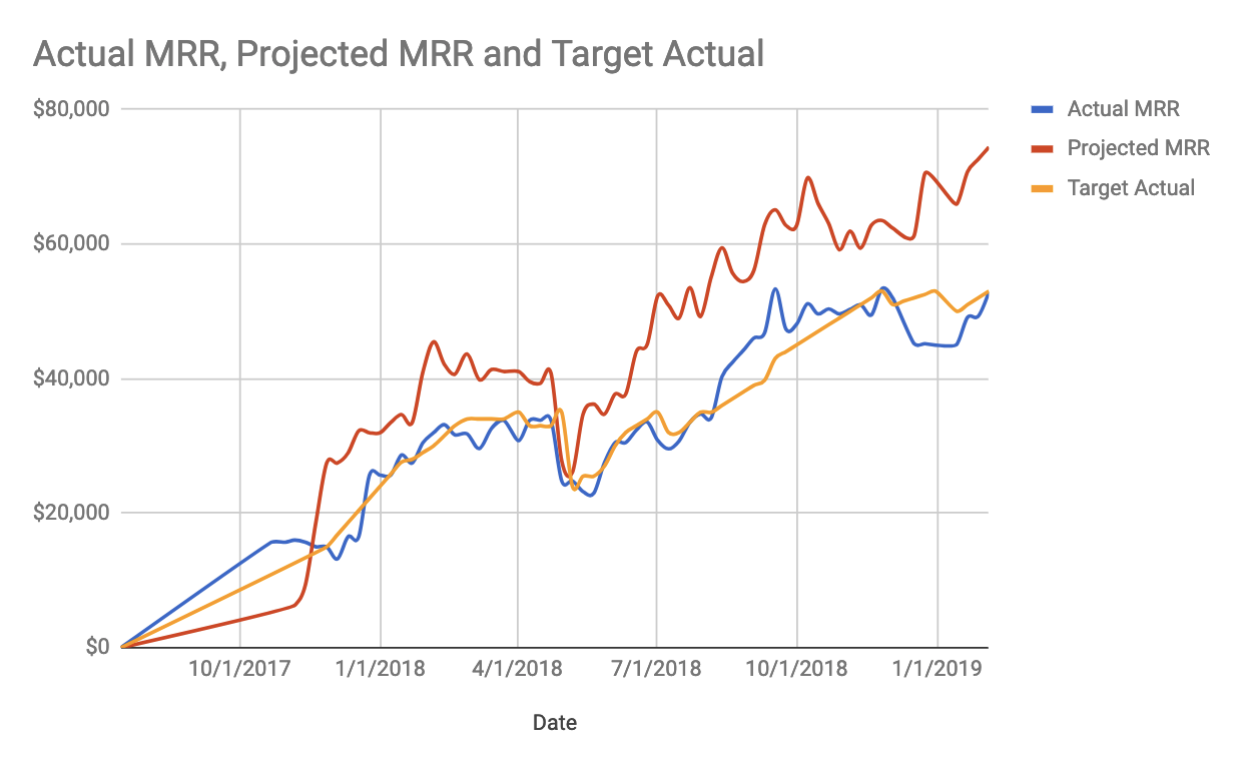The Lead Cookie Financial Playbook: Key Metrics & Dashboard Insights for Business Growth
"That which is measured, improves" - Peter Drucker
One of the simplest and yet most effective things you can do to improve your business is to create a metrics dashboard that measures your Key Performance Indicators (KPI's).
When you have insight into your metrics, you can see problems before they arise and course correct.
In this article, I am going to share the Lead Cookie Metrics Dashboard with you and walk you through each metric we track.
The Lead Cookie Metrics Dashboard
Below you will see a screen shot of our metrics dashboard for Lead Cookie. I don't use any fancy software for this. Just a simple Google Spreadsheet that we update every week.
Note that we didn't track great numbers the first few months of the business, but by 4 months in, we got relentless with this.
Also, we have added numbers over time which is why some columns show up blank at the start.
Customers & MRR Numbers
Active Customers
The first two columns track the number of customers we have signed on to each business line.
OutAct = The number of active customers who are running on our outbound service
NurAct = The number of active customers who are running on our Nurture service
MRR (Monthly Recurring Revenue)
In the next few columns you will see a few MRR numbers. Here is the breakdown explanation of each.
Nurture MRR - The total MRR of our Nurture service.
Outbound MRR - The total MRR of our outbound service.
Actual MRR - The combination of the Nurture and Outbound MRR.
Projected MRR - Our service has a 2-3 week onboarding timeline for most customers. They pay a setup fee, but then we do not begin billing their monthly subscription until we kick off their account. As a result, we created a "Projected MRR" number which includes the MRR that adds in what we have sold, which has not started yet.
Our metrics show us that our actual MRR typically lags 4 months behind our projected MRR. This is due to our retention numbers, as well as the fact that it's common for customers to delay start dates beyond 2 weeks due to their own internal timelines.
Target Actual
Each quarter we set a target for the end of the quarter and then incrementally increase our target toward that goal. This lets us know if we are on track or off track for our targets.
Sales & Marketing Numbers
Our sales and marketing numbers are possibly the most useful numbers we have in terms of identifying and fixing future problems.
If the MQL number drops below our target of 20 leads per week, then I know our sales call volume will soon drop.
If our sales call volume drops, then the closed deals number will drop.
And if we aren't closing enough deals, then our overall metrics drops.
By tracking from the top to the bottom of the funnel with 3 simple metrics, we can identify problems very quickly in our sales process and consistently make sure we are on top of it.
MQL's (Marketing Qualified Leads)
Simply put, this tracks how many new leads were entered into our CRM over the past week. This is a leading metric that lets us know our marketing is on track and generating enough opportunities for sales calls.
Sales Calls
This tracks how many sales calls we had over the past week.
Closed deals
How many deals did we close this week?
Profit
The next number is profit. Straight and simple. Revenue - Expenses = Profit.
We calculate this on a monthly basis to ensure we are making profitable decisions.
If you look at our metrics historically, you will notice we struggled to turn a profit for the first 6 months of running the business, as I was a bit naive and was overspending in many areas.
Retention
Churned Clients - Every week we track how many of our clients churned over the past 7 days. This enables us to then track our retention.
Retention - We track our retention numbers on a monthly basis. Due to the fact that we are a lead generation business, we tend to have a high rate of churn among our customers. At first this concerned me, but over time as I spoke with other business owners, I found that our churn rates are not far of from the industry norms.
Our formula for calculating churn is simple.
Churn = (Total customers churned in 30 day period) / (# of customers at the start of the month)
I'm a big believer in focusing on the positive instead of the negative, so instead of measuring "churn", we flip this on its head and measure "retention".
All we do is flip the percentage around, but we find it to be a much more motivating thing to talk about.
Content Metrics
For a long time, we were really not doing a lot with email marketing and content. To fix that, I decided to start measuring it. "That which is measured, improves"
Each week we measure.
Content Published - How many pieces of content did we put out?
List emails - How many times did we touch the email list?
Lead Cookie Subscribers - The total number of Lead Cookie subscribers
Jake Jorgovan Subscribers - The total number of subscribers to Jake-Jorgovan.com
These numbers are ultimately leading metrics to our MQL's since we know that content and the email list drive leads.
How we use our dashboard
Every single week I pull up this dashboard I just shared with you and we go over it as a team. I'm transparent with all of these numbers with our team as it gives them insight into the financial health of our business.
To be honest, I don't understand why most business owners are afraid to share these kind of things with their team or the external world.
My team doesn't feel weird about me sharing this. Instead, they feel consistently in-the-know and comfortable and confident with the decisions we are making as a team.
Use your dashboard as a way to measure company health and share it with your team every week. It's powerful when you do.
Numbers give you power
Beyond just tracking numbers for the sake of improvement, your numbers also give you power in making better decisions.
For example, due to the fact that we have tracked our numbers so well over the past year, I was able to run these numbers which show the actual value of every lead, sales call and customer in our business.
With these numbers in hand, I know how much I can spend to acquire a customer or a sales call.
Start tracking your numbers
I don't care if you are a one-man business or in the process of scaling up. Start tracking your numbers today. It has helped us become a leading B2B lead generation company.
As entrepreneurs, it's easy for us to make decisions in our business based on emotions.
Numbers fix that.
Numbers let you look at the cold hard facts of a situation, regardless of your emotional state.


